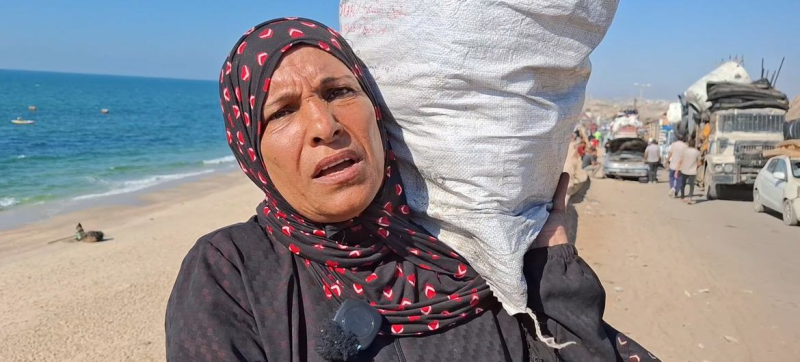- Central bank’s independence, reforms to tax laws urged |
- 500 solar desalination plants for safe drinking water in coastal areas |
- Four cops injured in attack during Durga Puja in Bagerhat |
- 41 out of 64 districts saw killings during July Uprising: IO |
Gaza Aid Crisis Deepens as UN Urges Urgent Ceasefire

Hundreds of thousands of people have been displaced in Gaza, often multiple times. Only about 18 per cent of the Strip is not subject to displacement orders or located within militarized zones.
UN agencies reiterated calls for an urgent ceasefire in Gaza on Tuesday to help alleviate Palestinian suffering, as a new US 20-point plan raised hopes of halting the fighting.
Winter is approaching, and heavy ongoing Israeli military operations in Gaza City continue to drive mass displacement.
“It’s important that we get that ceasefire and then we get aid flowing in, not only to prevent the famine that continues to spread south, but also to make sure that children and families are sheltered,” said UN Children’s Fund (UNICEF) spokesperson Ricardo Pires in Geneva.
Mr. Pires warned that falling temperatures in the devastated enclave will create “a whole different range of issues,” including health challenges for children and families.
He highlighted the “massive” displacement as people flee from the north to the south. Conditions are dire in the overcrowded coastal tented settlement at Al-Mawasi, which “can simply not absorb the quantity of people who are moving in.”
“We're talking about hundreds of thousands of people, an estimated 400,000 displaced,” he said.
According to the UN aid coordination office (OCHA), only about 18 per cent of the Gaza Strip is not subject to displacement orders or located within militarized zones.
People who have lost their homes desperately need shelter, and UNICEF has 11,000 tents as well as tarpaulin sheets “waiting to get in” to the Strip, Mr. Pires said.
“We’re not able to get those supplies in… It just shows how poor the conditions remain in terms of logistics and facilitation of aid,” he added.
Echoing his comments, OCHA spokesperson Jens Laerke stressed that humanitarians’ ability to distribute aid within Gaza is still compromised. Some aid has been able to enter, he said, noting that community kitchens were “resupplied to some extent,” with about 660,000 meals prepared and delivered through 137 kitchens across the enclave last Sunday.
But the ability to get aid into people’s hands depends on humanitarians obtaining permission to collect and deliver it.
“Sometimes it works, sometimes it doesn't,” Mr. Laerke explained, citing either a lack of facilitation from the Israeli side or other obstacles.
The UN previously reported that on Sunday, more than 40 per cent of humanitarian missions requiring coordination with the Israeli military were denied.
“A lot of the aid that has come in recently, that has been picked up, has been taken off the trucks by desperate people and, in some cases, by armed groups,” Mr. Laerke added.
He described the current situation as “chaotic” and underscored the “absolute” need for a ceasefire as soon as possible so that humanitarians can resume “a proper and well-coordinated, well-supplied aid operation.”

